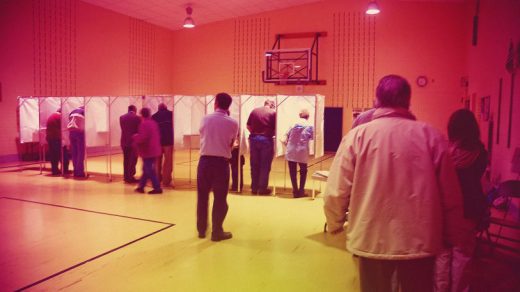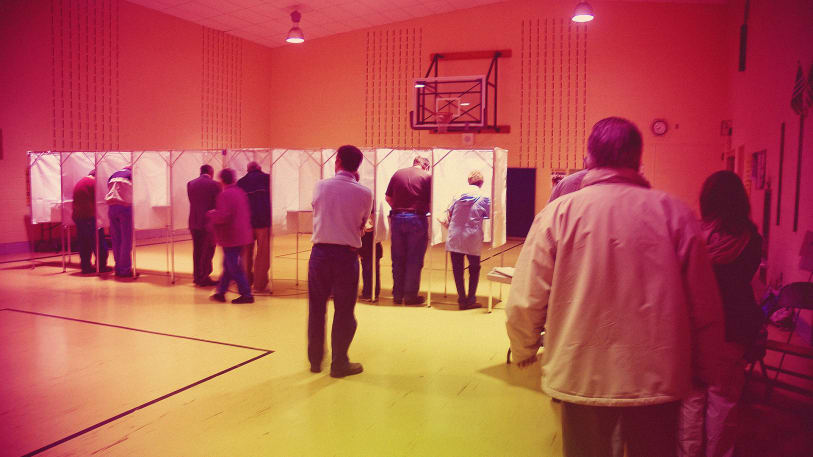Whatever Happened To Trump’s Voter Fraud Investigation?
It’s been almost three months since President Trump called for a major investigation into voter fraud, citing the author of a study who claimed that at least 3 million votes were cast illegally in the 2016 election. Since then, he’s obsessively tweeted about the issue, most recently claiming that he “would still beat Hillary in popular vote” despite the fact that he actually lost the popular vote by about 3 million votes. Yet as of today not much progress has been made on either front, and voting data experts are skeptical that any such study’s results will be accurate given the complexity of the task, and the fact that almost every previous probe has uncovered no evidence of significant fraud.
True the Vote, the nonprofit group behind the study cited by the president, hasn’t gotten very far. It’s still in the process of gathering voter rolls from states and sending out public records requests to government agencies, which is a far cry from actually identifying any fraudulent voters. But the leaders of True the Vote, whose board member Gregg Phillips’s tweets about voter fraud were retweeted by the president in February, is determined to carry out the project no matter how long it takes.
“It’s a Herculean task,” the group’s president, Catherine Engelbrecht, a Texan who founded a Tea Party group in 2009, told Fast Company, pointing out the challenge of dealing with states that each have their own process for releasing information about voters. “I originally said late spring, but what I hadn’t factored in was the snail’s pace that we would see some of these data sources crawling in.”
They’re not the only ones moving slowly on the effort. In early February, the White House announced that Vice President Pence was leading a task force into voter fraud, and he was “starting to gather names and individuals to be a part of it.” A month later, Pence’s office told NPR that the task force was “still doing the necessary groundwork.” By last week, a senior administration official told CNN that the task force “has not been the topic of a lot of conversation” in the White House. And as of today it still appears to have no staff and there is no indication of when it will start its work. A spokesman for Pence did not return requests for comment from Fast Company.
No predictions this time
True the Vote’s task consists of two parts: collecting voter rolls from every state (which list the individuals who voted in the 2016 election) and then comparing them to lists from a panoply of government agencies that include immigration records, prison records, among others. By filtering out noncitizens, felons, and others who are not legally allowed to vote, they hope to tally the number of people who illegally voted last November.
Engelbrecht is careful not to make predictions, noting that Phillips was “crucified” and “tried in the court of public opinion” over his claim that 3 million illegal votes may have been cast in November, though she does anticipate that True the Vote will have somewhere close to 200 million records to analyze. Phillips, whose findings were called suspect by the fact-checking group PolitiFact, did not return several calls for comment.
“There are enough fissures and wormholes and rabbit holes in the voting process that have afforded the opportunity for fraud to be institutionalized,” says Engelbrecht. “Are we going to find noncitizens voting? Dead people voting? Yes. And that points to a bigger problem and a bigger conversation that we need to have.”
Except most election experts don’t think it’s a problem at all, citing cleaner voter rolls, updated voting systems, and stricter voter ID laws in many jurisdictions. During the George W. Bush administration, then-Attorney General John Ashcroft set up a “voting access and integrity initiative,” which hardly found any examples of voter fraud. And in 2012, Florida’s governor, Rick Scott, sought to “purge undocumented immigrants from the voter rolls,” reports Politico, but his list of 180,000 names was so full of errors that in the end only 85 people were kicked off the rolls.
And election experts question True the Vote’s approach, emphasizing that it’s not statistically sound for such a complicated data challenge.
“If I were to undertake an effort like this, I would not obtain the voter rolls of every state and then compare them to these lists of noncitizens and felons and others,” cautions David Becker, a former Justice Department attorney who is now executive director of the Center for Election Innovation and Research. “You will get an enormous number of false positives. You need much more data, not to mention that voter rolls are riddled with errors in the first place.” He points out that such rolls don’t have Social Security numbers or driver’s license info, and might not even have birth dates in some cases.
“Comparing first name and last name and maybe date of birth—any statistician will tell you that’s an awful way to match and it will not deliver credible results,” he continues. “If you have one David Becker and my birthday and another record with David Becker and my birthday and you think you’ve got a match, you’re statistically wrong.”
Engelbrecht insists that her method is valid, noting that she’s got a team of 10 statisticians and academics to analyze the research, though she declined to identify any of them. “This is an important question that Americans want the answers to—is it true that millions of illegal votes were cast? If it’s not true, then let the data bear that out. If that’s true, then let’s fix this, and technology is there for that.”
She says that the group has not yet been contacted by Vice President Pence’s task force. “We’d love to be involved if we’re called to service.”
(25)



